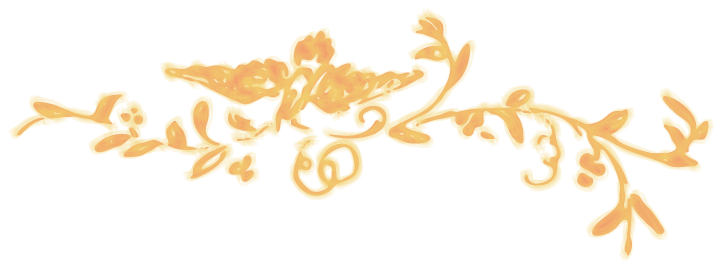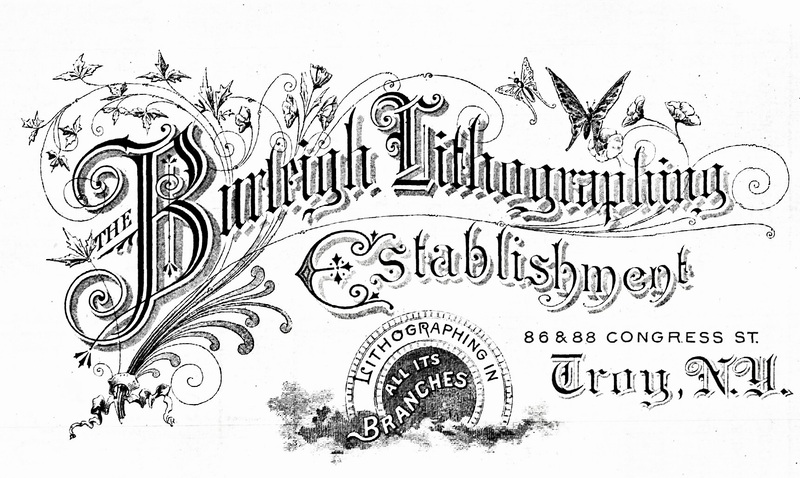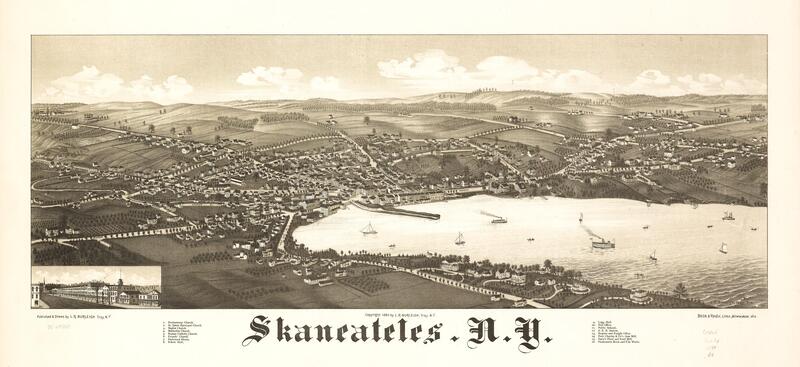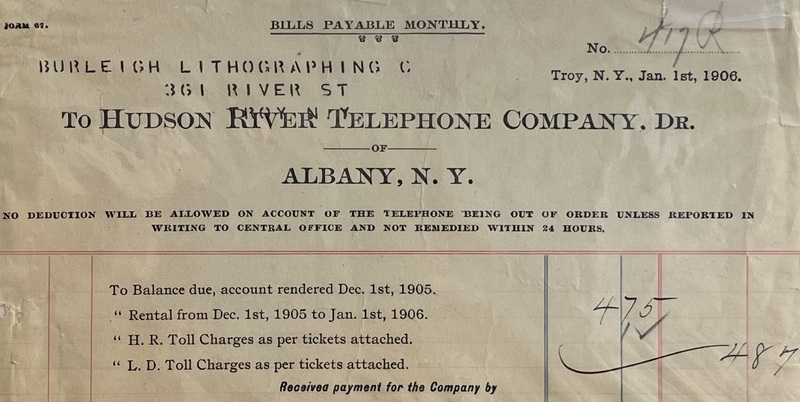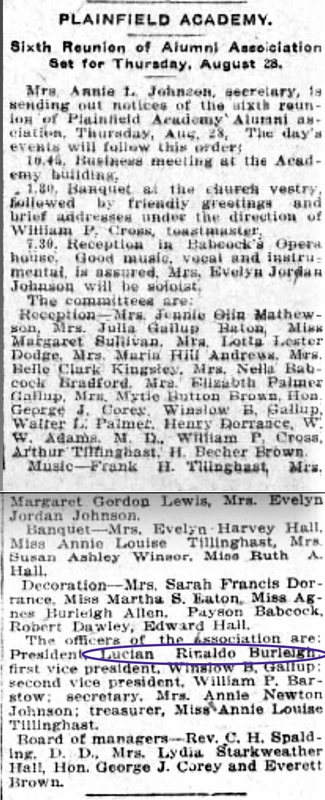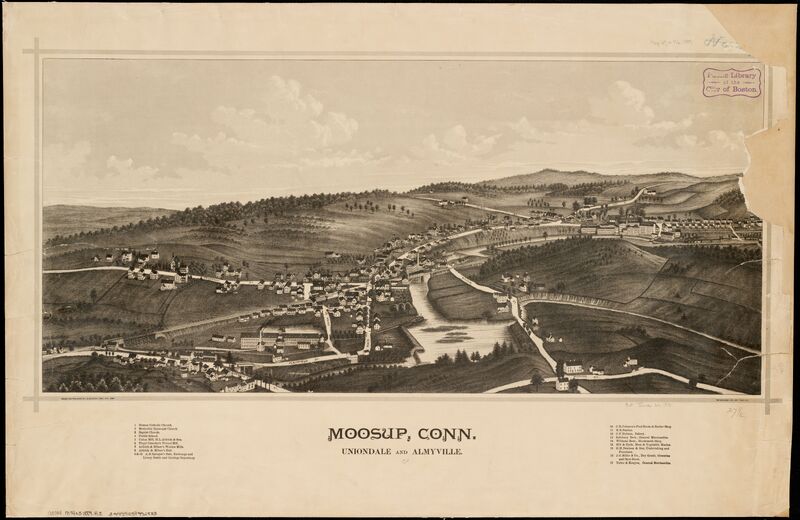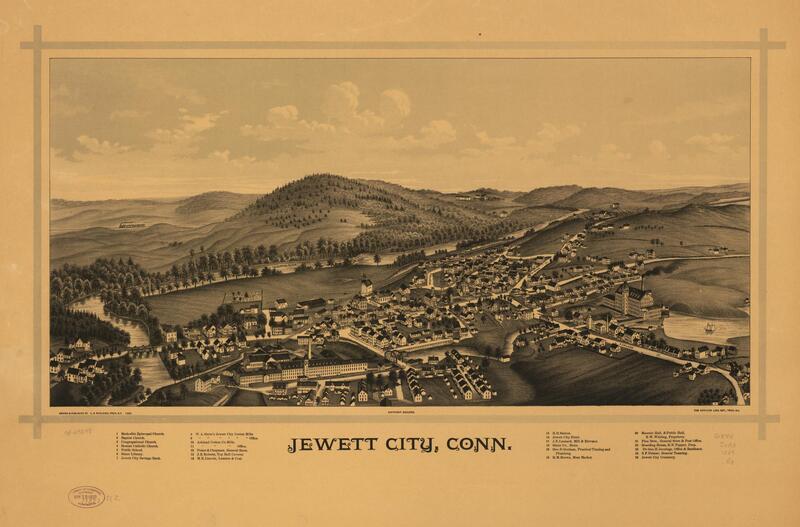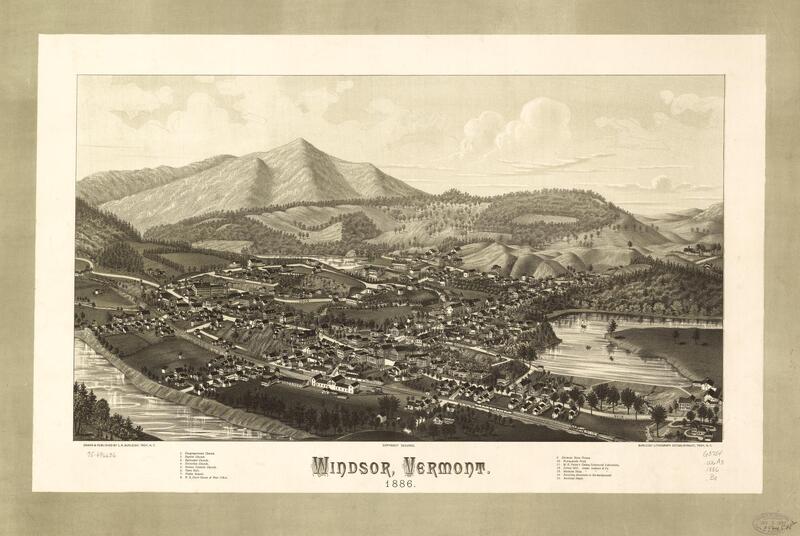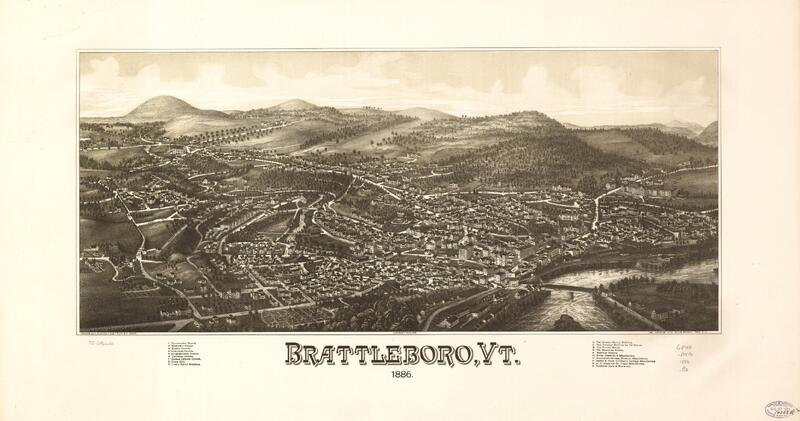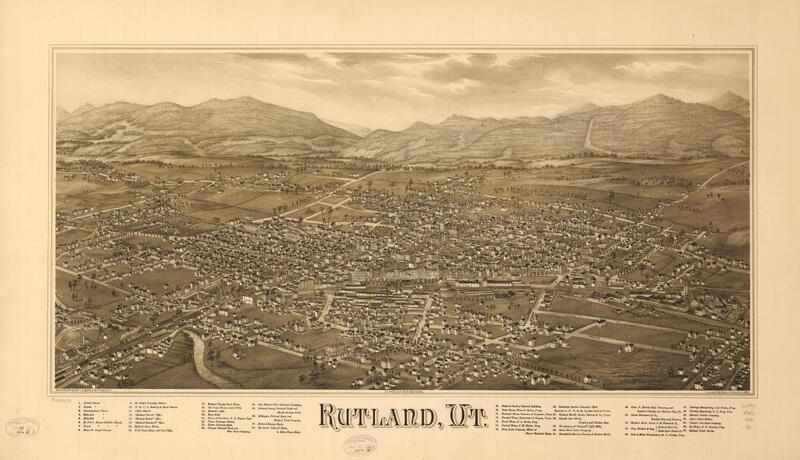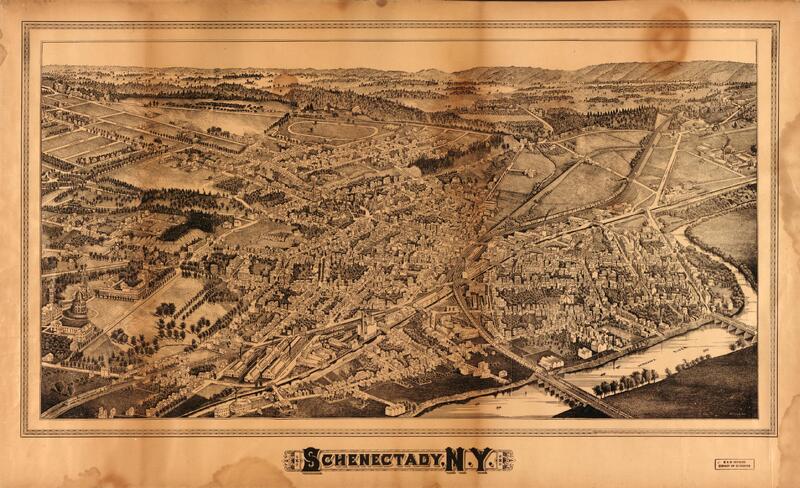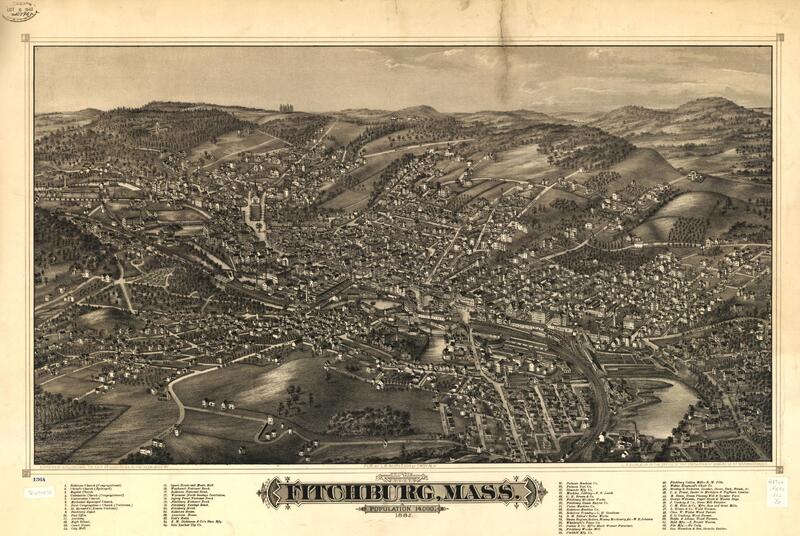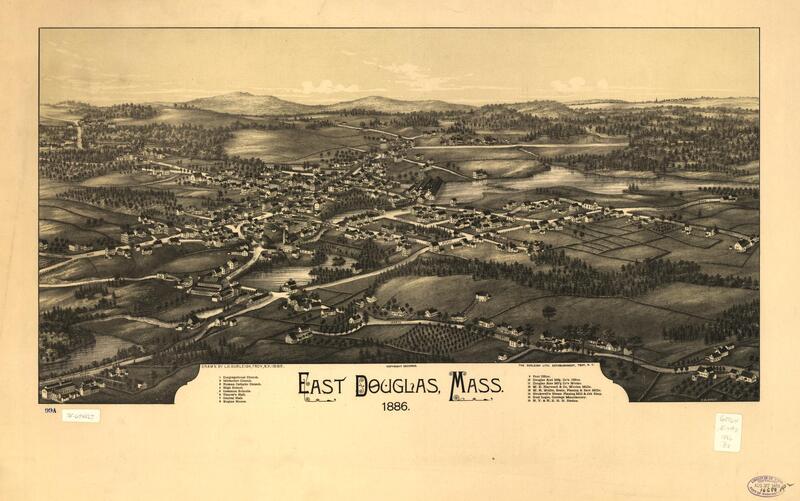L. R. Burleigh Jr.: Lithographer of Bird's-Eye Views
L. R. Burleigh Basics
b. February 6, 1853, Plainfield, Connecticut
d. July 30, 1923, Troy, New York
m1. Margaret Russell Courtney (1847-1886), September 15, 1880, Troy, New York
m2. Mary Fink (1866-1952), July 26, 1890, Troy, New York
lived in Connecticut, Massachusetts, and New York
L. R. Burleigh, son and namesake of the preacher L. R. Burleigh, moved away from reform causes, and, like his cousins Charles C. Burleigh and Sydney Burleigh, moved into the artistic sphere. L. R. Burleigh became one of the finest lithographers of the late 19th and early 20th centuries, producing many city views. He located his business in the Albany/Troy/Schenectady region of New York State. His output was extensive, with detailed and accurate to-scale quality. Many of his bird's-eye-views are accessible on the internet; even his Wikipedia page has an admirably comprehensive set of them.
According to John Williams Reps' book Views and Viewmakers of Urban America: Lithographs of Towns and Cities in the United States and Canada, L. R. obtained a bachelor's degree in civil engineering from the Worcester County Free Insitute of Industrial Science (now Worcester Polytechnic Institute) in 1875. The school had an excellent reputation, but Reps posits that a severe business depression might have caused Lucien to move away from engineering as a career. He instead moved to Milwaulkee sometime during 1875 and stayed until 1878, where he worked for an unknown lithographing company and "made bird's eye view pencil sketches of villages and the smaller cities, to be copied on stone and printed." After leaving the city he returned to Plainfield and taught taught school there through spring 1879.
After this stint as a teacher, L.R. began his lithographic career in earnest. He started working for the H. H. Rowley Company of Hartford, CT in the summer of 1879, and published his first view in late 1882. That same year he began drawing for the D. Mason & Co. firm in Syracuse, before starting his own firm in Troy in 1886.
As an artist drawing cityscape views, L. R. would have been required to travel extensively for his work. He drew views of towns in at least five different states (Connecticut, Massachusetts, New Hampshire, New York, Pennsylvania, and Vermont), with his 79 separate drawings of New York locales suggesting just how much travel was involved. This might explain why L. R. chose to retire relatively early drawing his own views - Reps estimates that he gave up this part of his profession in 1890. However, his lithograph studio remained open into the twentieth century, although it shifted away from city views to other material such as stationary, bonds, and stock certificates around 1899. Even once he stopped drawing himself he continued to print city views by other artists, namely George Norris and Christian Fausel.
Although Rep's book is more focused on the logistics of lithograph printing, the author does offer generous words about L. R.'s work and talent:
His period of concentrated activity as a viewmaker, therefore, lasted only a dozen years. In that time he achieved an almost total monopoly in upstate New York and Vermont, for few others ventured into this region, which Burleigh had established as his domain...
Burleigh concentrated on small cites and towns for the subjects of the views published by his firm. No Burliegh views exist of Troy, Albany, Rochester, Syracuse, Utica, or Buffalo, except for the Rowley prints of the first three to which Burleigh may have contributed his talents. With this exception, his views provide an immensely valuable record of the urban scene in upstate New York, Vermont, and elsewhere in New England. Because of the brevity of the time in which Burleigh worked, his views make it possible to compare one community with another during the same period.
Burleigh had an excellent eye for architectural and engineering detail, but his towns eerily lack people or animals and appear almost deserted. Burleigh did not experiment with new or different effects either as an artist or as a publilsher. He drew each place from about the same imaginary viewpoint, and he invariably printed the views with a single tone added to the basic design. Nevertheless, while unexciting as art, his views document the appearance and pattern of small-town New York and New England with a clarity and thoroughness unsurpassed by any other viewmaker.
Unfortunately, details about L. R.'s life beyond his career are very limited. Towards the end of his life he took on the role of leading an alumni association for the (defunct) Plainfield Academy. Thus he helped retain historical memory of the family, along with his neice, Agnes Burleigh Allen. However, this was not a retirement activity; an obituary that ran in The Journal of the Worcester Polytechnic Institute stated that L. R. ran his studio until about a year before his death, when ill health forced him to retire. The obituary also gives scant information about his interests oustide of his work, writing that:
He was the oldest member of the Schnectady branch of the W. P. I. Alumni Association, a member of the Society of Engineers of Eastern New York, the National Geographic Society, the Troy Rotary Club and the Chamber of Commerce. He was a prominent member of the All Souls' Unitarian Church, serving as one of its Trustees at one time. He was a skillful chess player and was a member of the Troy Chess Club.
His genial and pleasing nature made him a favorite among his class, school and business associates. One outstanding characteristic was a real and ever-ready generosity.
In addition to this, we know only the basic information about his family life and relationships. He was married twice; his first wife, Margaret Russell Courtney (1847-1886), married him in 1880 in Troy N.Y. They had two surviving children before her early death. In 1890, L.R. married his second wife, Mary Mink (1866-1952); they had four children. All six of his children outlived their father, and so we can hope to discover more about him in future if any of them, and their descendants, retained stories and artifacts.
Gallery
The L.R. Burleigh lithographs below were chosen because they connect to various points in the Burleigh story. Charles Calistus Burleigh (Sr.) visited the Vermont sites when editing a newspaper in that state. William Henry Burleigh was connected to Schenectady in the 1830s. John Oscar Burleigh lived and worked in the Douglas, Massachusetts area; L.R. Burleigh attended college in Worcester. Finally, Moosup and Jewett City were both proximate to Plainfield, and would have been places that L.R. Burleigh knew during his youth.
For a more complete listing of L. R.'s work, please see his catalog on this site. For more images of his work, the Library of Congress and Wikipedia both have wonderful galleries of his views.
References
- Reps, John W. Views and Viewmakers of Urban America: Lithographs of Towns and Cities in the United States and Canada, Notes on the Artists and Publishers, and a Union Catalog of Their Work, 1825-1925. University of Missouri Press, 1984.
- Whitney, Edwin H. "Lucien R. Burleigh." The Journal of the Worcester Polytechnic Institute 27(1923-1924): 29-30, The Journal of the Worcester Polytechnic Institute - Google Books
